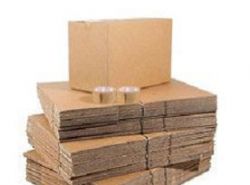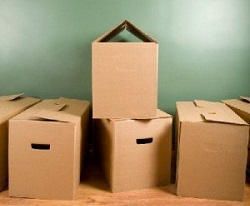Packing Boxes – the Best Solution?
 When you’re planning your house move, there’s a lot to deal with. It can be a stressful time, trying to organise the final administration, removals company and more. Then there’s the extra hassle of having to pack your home into boxes! But this can be made very much easier, using packing boxes – the best solutionthis simple guide.
When you’re planning your house move, there’s a lot to deal with. It can be a stressful time, trying to organise the final administration, removals company and more. Then there’s the extra hassle of having to pack your home into boxes! But this can be made very much easier, using packing boxes – the best solutionthis simple guide.
Firstly, choose the right removals firm. They may provide you with boxes and packing materials that are fit for purpose. Some will loan you boxes, then collect them later to be reused once you’re safely installed in your new home and unpacked. This reduces the cost of this aspect of your move – and you’ll be environmentally friendly.
But, do compare prices. There are companies out there who specialise in supplying packing boxes, packing paper, tape, protective wrap. They may be able to beat others on price and speed of delivery. So shop around for the best deal and someone who can definitely meet your deadline.
Choose the right kind of box. You’re going to be entrusting your prized possessions, your heavy items and your breakables to this packaging, so it’s definitely worth going for quality. Flimsy cardboard just wont cut it. The old boxes you’ve stored in your garage or loft may not be up to the job. You need strong cartons, of thick cardboard. You’re also going to need different sizes: books for example, heavy as they are, should be packed in shorter boxes while light clothes and bedding can fill a much larger container and still be liftable.
With this in mind, especially if you’re planning to move yourselves, make sure you don’t fill large boxes more than halfway with heavier items. The things that weigh more need to go towards the bottom, with lighter goods or padding on top. Don’t overpack – and ensure packed boxes don’t weigh more than fifty pounds. Yes, that means you’ll use more materials, but it ensures no-one gets injured which is worth a whole lot more.
Don’t stint on other materials. It’s worth investing in a tape dispenser or tape gun with a cutting edge: this will save you time, waste and effort when sealing up your household items. Get good quality brown tape, at least two inches wide. And don’t stint on its use, either! Before you even start packing it, the box will probably need assembling. Make sure you tape at least twice across the bottom join, and consider making a cross and even going around the edges. After all, the bottom is taking all the weight of the contents: you don’t want it giving way!
During your packing, use protective wrap and paper to protect your breakables. Bubble wrap is ideal. Items shouldn’t be able to rattle around in transit, nor bang into each other or the sides. There should be no empty spaces. But be careful – don’t cram things in so tightly that they are forced against each other, as this too leads to breakages. There’s nothing more heartbreaking than getting to your new home only to find your glasswear or porcelain collection in shards.
Supplying packing boxes, packing paper, tape, protective wrap. Use what you’ve got: curtains, drapes, bed linen, clothes, towels, pillows and soft toys all need packing up too: and they can be sensibly deployed as cushioning for your valuables too!
Grab a marker pen. It helps you and your house movers enormously if you mark each and every box clearly with 1) what is in it 2) which room in your new home it’s destined for and 3) whether its heavy or contains fragile items. Many of the cartons that are supplied by the professionals will have simple tick boxes on them with the rooms and other key points on, saving you time.
Save money; maybe even make some! Before you pack everything away, think about whether you honestly need it any more. Some people pack empty toilet rolls, clothes they haven’t worn in years (or have grown out of) and items that they don’t even like. So, start as early as you can and get rid of the junk. This doesn’t have to mean throwing it out. Think about having a garage or pavement sale, do some car boot sales or put the things you don’t want any more but are worth something to someone on auction sites like Ebay. It is cathartic to move into your new home having had a good clearout. You may even have some more change now to buy new things for your new environs. Start early. Don’t underestimate how long it actually takes to pack up all your worldly goods. Don’t forget: there are garages, sheds, lofts, outhouses and cellars that all near clearing before your buyer can move in. So it’s best not to leave things until the last couple of days. Be methodical, be ruthless. Start with those outside areas and out of the way cupboards you rarely use. Clear one room at a time and, as soon as the first one is cleared, you can use is at “Packing Central”. Store all the ready boxes in there, so you’re not tripping over them as normal life goes on until moving day. Think about having a table of all your necessary packing materials on so they are close to hand. Make sure the room is downstairs, so you are not having to haul all the boxes upstairs!
Start early. Don’t underestimate how long it actually takes to pack up all your worldly goods. Don’t forget: there are garages, sheds, lofts, outhouses and cellars that all near clearing before your buyer can move in. So it’s best not to leave things until the last couple of days. Be methodical, be ruthless. Start with those outside areas and out of the way cupboards you rarely use. Clear one room at a time and, as soon as the first one is cleared, you can use is at “Packing Central”. Store all the ready boxes in there, so you’re not tripping over them as normal life goes on until moving day. Think about having a table of all your necessary packing materials on so they are close to hand. Make sure the room is downstairs, so you are not having to haul all the boxes upstairs!
Don’t forget: there are some items you’ll need right up until the last moment, so don’t make the mistake of packing them too early. Leave a suitcase of clothes, toiletries etcetera for each person right up until the move. But also set aside a necessities box including the kettle, cups, cleaning materials, dusters, screwdrivers … everything you’re going to need when the boxes are actually being moved out. A common mistake is to load the vacuum cleaner into a removals van! You’re going to need it, once the sofa is moved and as each room empties. Your buyer will feel very much happier if you leave each room clean, clear and free of all the dust and cobwebs that accumulate behind the furniture.














